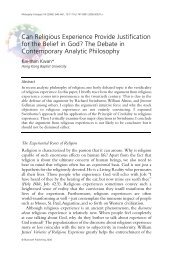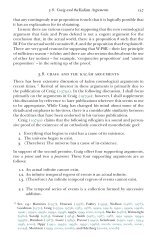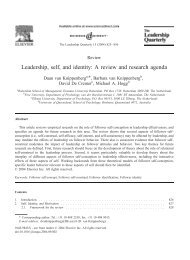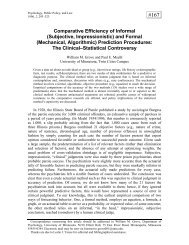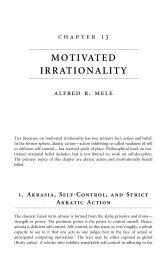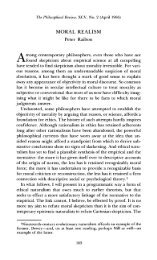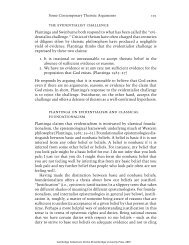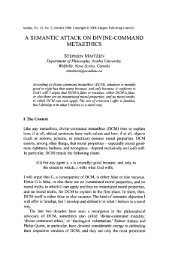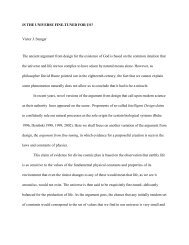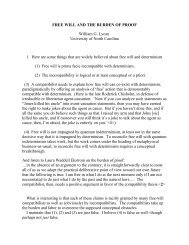The Problem of Evil - Common Sense Atheism
The Problem of Evil - Common Sense Atheism
The Problem of Evil - Common Sense Atheism
Create successful ePaper yourself
Turn your PDF publications into a flip-book with our unique Google optimized e-Paper software.
<strong>The</strong> <strong>Problem</strong> and Argument from <strong>Evil</strong> 7<br />
about the existence <strong>of</strong> evil is, they may <strong>of</strong> course appeal to this supposed<br />
truth in their attempts to expose what they regard as the weaknesses <strong>of</strong><br />
the argument from evil. But apologists need not believe that they know,<br />
or that any human being knows, the real truth about God and evil.<br />
<strong>The</strong> apologist is, after all, in a position analogous to that <strong>of</strong> a counsel<br />
for the defense who is trying to create ‘‘reasonable doubt’’ as regards<br />
the defendant’s guilt in the minds <strong>of</strong> jurors. (<strong>The</strong> apologist is trying to<br />
create reasonable doubt about whether the argument from evil is sound.)<br />
And lawyers can raise reasonable doubts by presenting to juries stories<br />
that entail their clients’ innocence and account for the prosecution’s<br />
evidence without maintaining, without claiming themselves to believe,<br />
that those stories are true. 8<br />
Typically, apologists dealing with the argument from evil present what<br />
are called ‘‘defenses’’. A defense is not necessarily different from a<br />
theodicy in content. Indeed, a defense and a theodicy may well be<br />
verbally identical. Each is, formally speaking, a story according to which<br />
both God and evil exist. <strong>The</strong> difference between a defense and a theodicy<br />
lies not in their content but in their purposes. A theodicy is a story that<br />
is told as the real truth <strong>of</strong> the matter; a defense is a story that, according<br />
to the teller, may or may not be true, but which, the teller maintains,<br />
has some desirable feature that does not entail truth—perhaps<br />
(depending on the context) logical consistency or epistemic possibility<br />
(truth-for-all-anyone-knows).<br />
Defenses in this sense are common enough in courts <strong>of</strong> law, historical<br />
writing, and science. Here is a scientific example. Someone alleges that<br />
the human eye is too complex to have been a product <strong>of</strong> the interplay <strong>of</strong><br />
random mutation and natural selection. Pr<strong>of</strong>essor Hawkins, an apologist<br />
for the Darwinian theory <strong>of</strong> evolution, tells a story according to which<br />
the human eye, or the eyes <strong>of</strong> the remote ancestors <strong>of</strong> human beings, did<br />
come about as a result <strong>of</strong> the combined operation <strong>of</strong> these two factors.<br />
She hopes her audience will react to her story by saying something like,<br />
‘‘That sounds like it would work. <strong>The</strong> eye might well have precisely<br />
the evolutionary history related in Hawkins’s story.’’ Hawkins does not<br />
present her story as an account <strong>of</strong> the actual course <strong>of</strong> evolution, and she<br />
does not take it to constitute a pro<strong>of</strong> that the human eye is a product<br />
<strong>of</strong> the interplay <strong>of</strong> random mutation and natural selection. Her story is<br />
intended simply to refute an argument for the falsity <strong>of</strong> the Darwinian<br />
theory <strong>of</strong> evolution: to wit, the argument that the Darwinian theory is<br />
false because it is inconsistent with an observed fact, the existence <strong>of</strong> the<br />
human eye.



